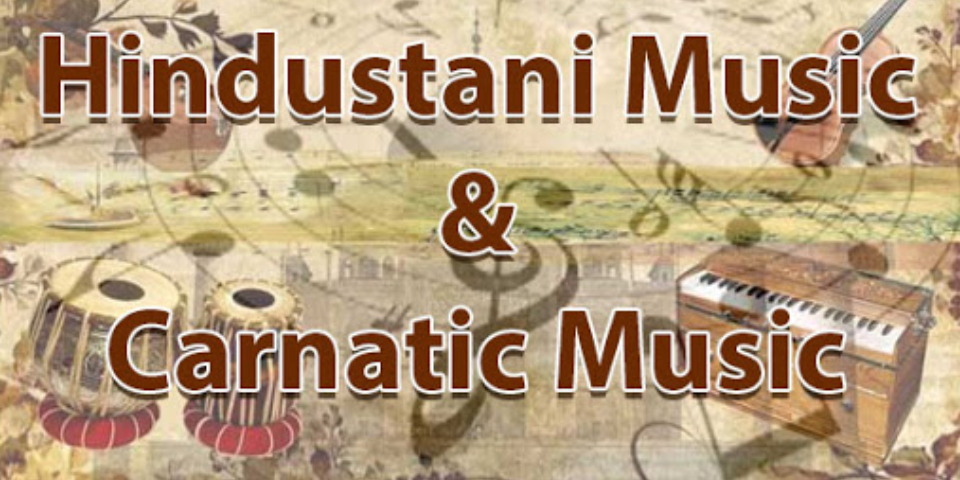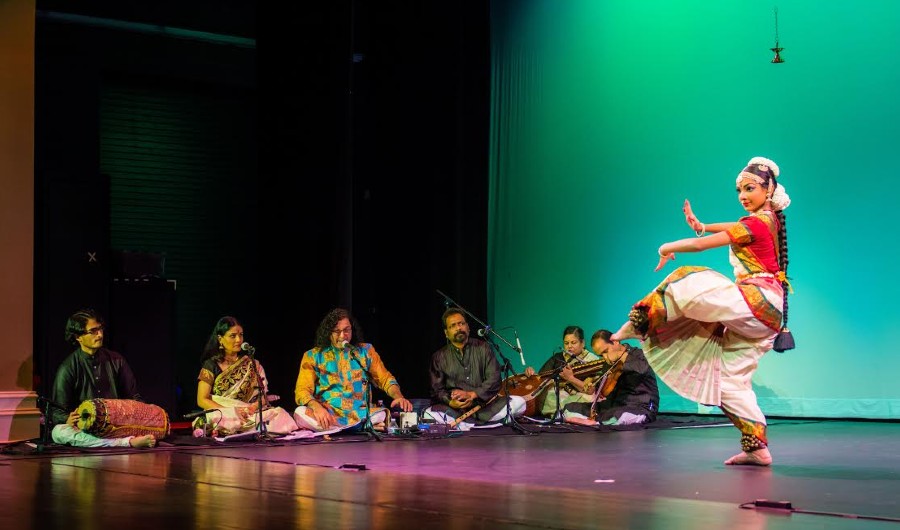Difference Between Hindustani And Carnatic Music

Going Online To Learn Carnatic Music
January 18, 2020
The complete guide on diverse forms of RAGAS
January 22, 2020Difference Between Hindustani And Carnatic Music

Types of Indian Music
India is a land of diverse tradition and culture. With its variety of cuisines, costumes, lifestyle, interests, and tastes, India is abound in everything. Similarly, Indian music also has varieties to provide the best of the musical experience. Classical music, folk music, Indian rock, Indian pop and filmi music are some of those varieties. All forms of Indian music are listed under two broad categories: Carnatic music and Hindustani music. Melody, harmony, tempo, meter, articulation, softness and loudness are the elements of music which show the difference between the two.
Know Your Hindustani Music
Hindustani Music is believed to have its origin from the Delhi Sultanate. Amir Khusrow, who lived in between 1233 and 1325 CE, was a composer of music in Turkish, Persian, and Arabic. Some aspects of Hindustani music have been systematized by Amir Khusrow. Yaman Kalyan, Sarpada, and Zeelaf are some of the ragas that were found by Amir Khusrow. Sitar, the musical instrument was introduced during his time. With the fusion of Persian melody and a beat like Dhrupad, he introduced the Qawwali genre of music. During medieval times in India, Persian elements of music became popular. This led to the formation of Hindustani music. The oldest form of Hindustani music, Dhrupad, was developed by Swami Haridas. Over time, Thappa, Thumri, and Khyal, some of the distinct styles of Hindustani music, also developed.
Know More About : Classical Music – A Study Partner For Relaxation
Characteristics of Hindustani music
- Importance is given to the construction of the song (Samvadi and Nadi swars).
- The Hindustani singer will recite Joda, the clap at a fast pace. Taal will not accompany the song after this.
- Swars that are not distinct will be introduced after completion of full swars by the singer.
- Tilawal, the thaat of pure swars are also introduced.
- A range of swars is available with flexible usage.
- Different ragas are practiced for morning and evening. There is a time limit for practicing ragas.
- Normal Taals are followed.
- Ragas are categorized on genders.
- While switching ragas during singing, there is no ratio followed in Hindustani music.
Know Your Carnatic Music
Purandar Das founded Carnatic Music. Shyama Shastri, Muthuswami Dikshitar, and Tyagaraja are the triratnas, who took Carnatic music to a greater level, who lived during the period from 1700 to 1850 CE. Swati Tirunal, Kshetra Rajan, and Subramaniya Bharathi are the other three exponents of Carnatic music. While playing instruments associated with Carnatic music, the style Laya is given much importance. Semmangudi, Gangubai Hangal, Mallikarjun Mansur, Ramanuja Iyengar, M.S. Subbulakshmi, and Shrinivas Ayyar are some of the famous musicians who practiced this style of music. This style is popular in Karnataka, Tamil Nadu, Andhra Pradesh, and Telangana, the South Indian states.
Characteristics of Carnatic Music
- Can control the intensity of sound
- Evident use of Kundali swaras
- Freestyle of ragas
- Aalap and taanam are recited first by the singer
- Indistinct swars are started based on the shrutis
- Shrutis decide the purity of swars
- Mukhari, the thaat of pure swars is practiced
- Well defined time schedule is followed

